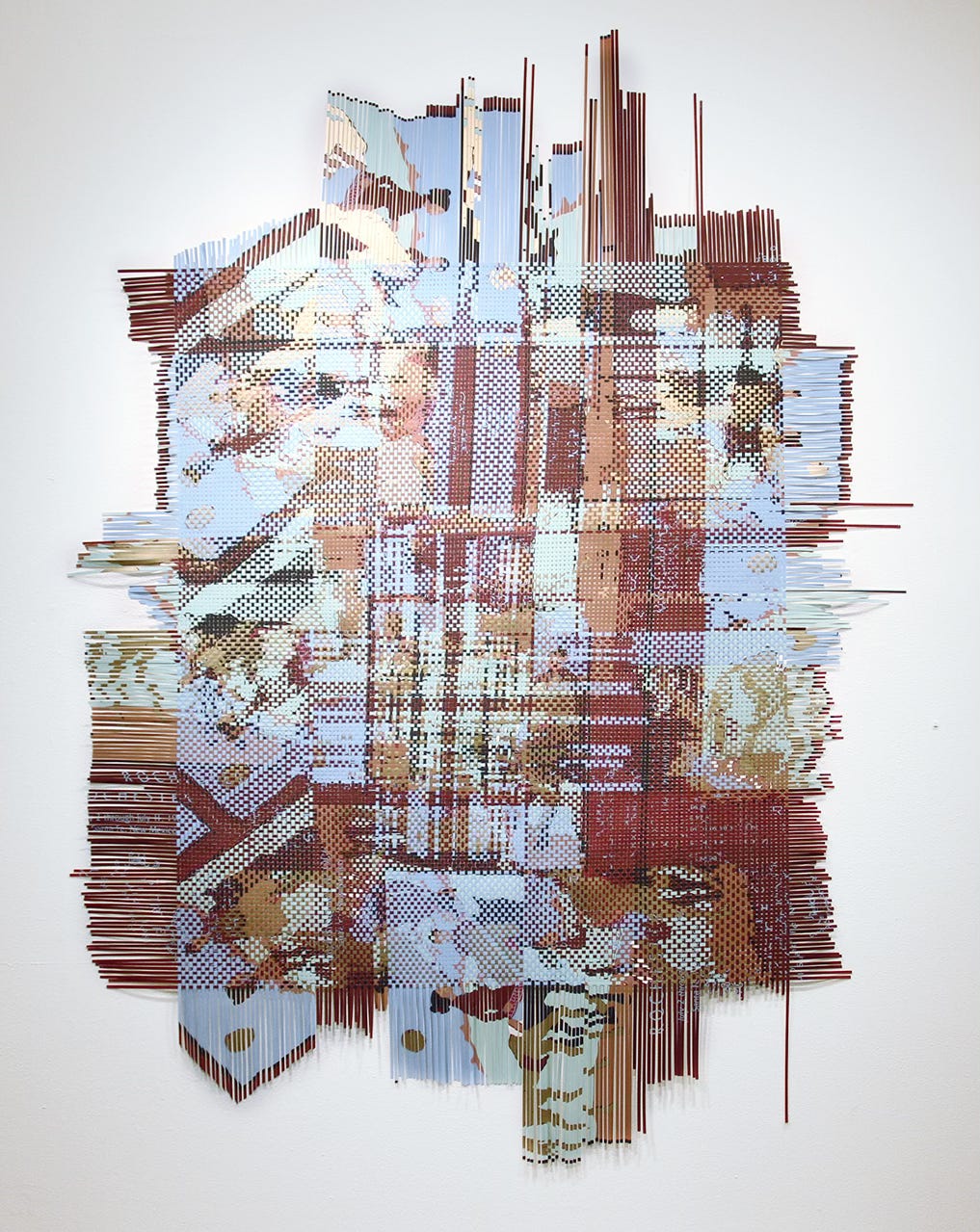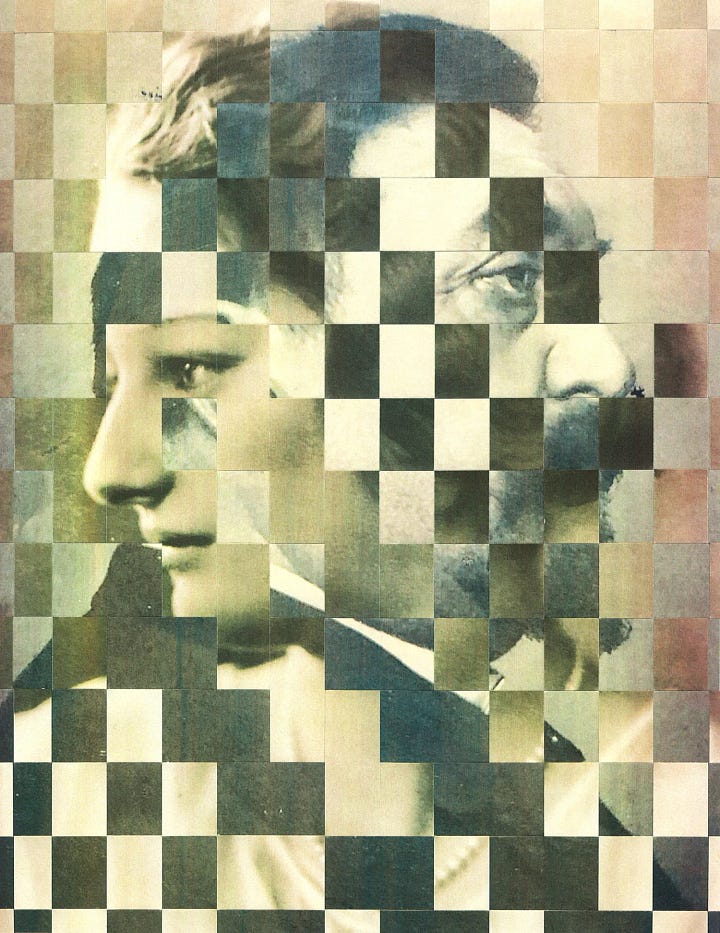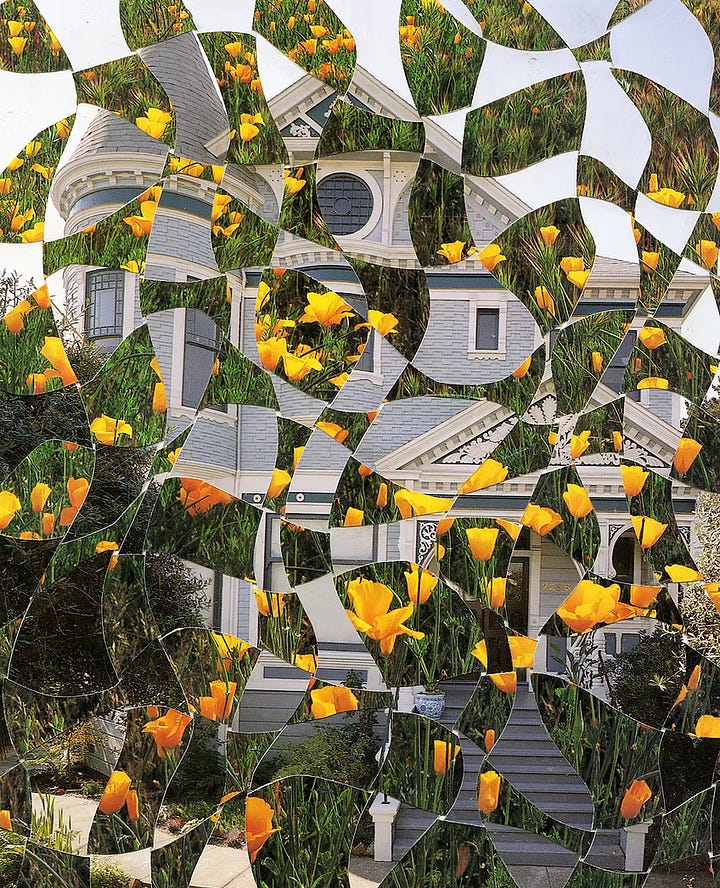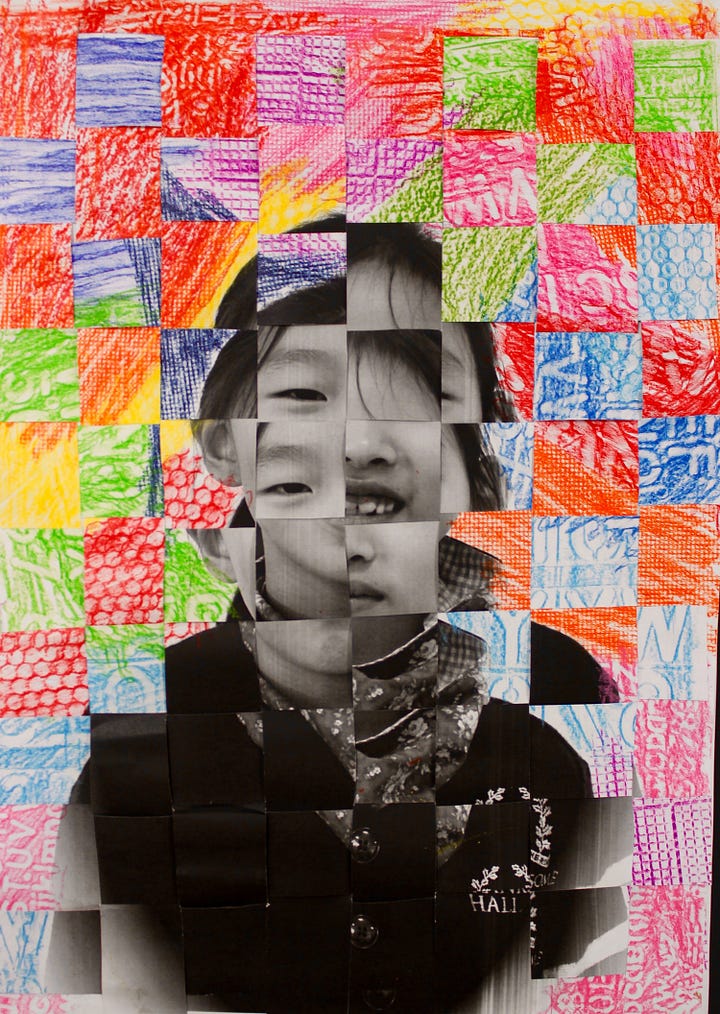Hello, and welcome back to another edition of “Drop your shoulders and your expectations, get curious and start to notice the shocking beauty all around you, right now. Now grab a pen and make something.” AKA DrawTogether.
Looking at the art share/community chat from last week, I’m seeing so much love, respect, and vulnerability in your responses to last week’s prompt: draw someone who helped you become who you are. Family members, mentors, artists, book clubs, and fellow sea-dippers — so many personal stories about loved ones who inspired and taught you, supported you unwaveringly, and made you feel at home within yourself. That’s true love. Also true love: Book giveaways! Our winner of the Caroline Paul double-signed-paperback-release is at the bottom of this dispatch. :)
Now onto our super fun woven, twisting, turning, stitching, quilting tapestry of a drawing lesson. Our GUT featured artist Miguel Arzabe’s art pulls me in all the best directions. I think you’ll feel the same.

“I don't know where it's going to go, but I have to trust that it's going to take you somewhere interesting. Otherwise, why do it?” - Miguel Arzabe
Weaving Paintings with Miguel Arzabe
As we wrap up our exploration of the de Young museum this week, I wanted to point out something I love about the museum: they are always seeking to support emerging, contemporary artists, including local Bay Area artists. One way museums do this is by purchasing their work and adding them to the museum’s permanent exhibit. Wandering through the de Young permanent collection gallery downstairs, I was absolutely floored when I first saw this incredible woven painting by the Oakland-based artist Miguel Arzabe.

The color. The patterns. The shapes. Looking at this piece sparks my curiosity — I have so many questions about his weaving practice: where it comes from, his process and materials, what it means to him, and what he hopes the work will spark for viewers. So I did some digging.
It turns out that Miguel Arzabe started making woven artworks when he was in an artist residency at the Santa Fe Art Institute. Reflecting on his experience there, he said, “I was noticing Diné [Navajo] weavings all over Santa Fe, and it reminded me of seeing Bolivian textiles in the streets whenever I’d go there to visit my family.”1

Arzabe’s parents immigrated to the United States in the 1960s from Bolivia, and they maintained close ties to their homeland. Bolivia has a rich weaving tradition — something he realized he never saw in his art classes. “The Andean practice of hand weaving is one of the oldest active textile traditions in the world, but it was barely mentioned, if at all.”2 He decided he wanted to spend more time understanding textiles. During a residency at the de Young in 2016, he dove into their textile library to learn more.

In Santa Fe, he explored weaving together vintage posters and prints he found in town, and was gripped by the possibilities. “As I was making it,” he said, “I had the sense that it was going to totally take over my life. It just felt right.”3 This reminds me of Ruth Asawa’s journey discovering the basket weaving in Mexico, and how that led to her experimentations with wire, and eventually her hanging wire sculptures. Both artists’ practices honor indigenous traditions yet combine them with their unique experience and background to make them their own.

Strip Paintings (or, how to weave a drawing)
Arzabe continues to use found materials, and weaves together paintings of his own design. After painting a pair of canvases, he sends the two pieces to a fabricator who laser-cuts them into strips. Arzabe takes those strips and weaves together by hand to form a new work of art. He refers to these works as strip paintings. He starts weaving from the bottom without a definite plan. As he says in the video below, “I don't know where it's going to go, but I have to trust that it's going to take you somewhere interesting. Otherwise, why do it?” Love that.
“Not only am I an engineer, but I'm also an artist. Whereas in the past I didn't feel totally like I could be an abstract painter or that I couldn't reference my Latinidad. But now, with this way that I make work, I can address both or none. It gives me more freedom. So I'm taking these sort of two sides of who I am and bringing them together. And this sort of productive confrontation. And when they exist side by side, some interesting things happen.”
- Miguel Arzabe in “In the Studio”
As he talks about his weaving practice, Arzabe reflects on the dualities present in his work: His own identity as mestizo (mixed Latin and Indigenous descent) and the Indigenous and Western influences on his art; His engineering background combined with his artistic practice; The tradition of hand-weaving and the laser technology cutting his strips. I love how his weavings recontextualize both craft and fine art so they are in conversation with one another.
Museum Discoveries
Many times when we visit museums, we’re there to see some big-name visiting show of some famous dead artist whose work we are already familiar with. Too often we (I!) neglect the galleries with the museum’s permanent collection. We figure we’ve seen it before, or we’ll get to it later. But the permanent collection is always changing — museums acquire new work, they rotate pieces in and out, and create new meanings and conversation by featuring and juxtaposing new work. Next time you are in a museum, definitely take a walk through the permanent collection. Let us know who you discover.

❤️✏️❤️
More Woven Drawing Inspo




Just a quick overview of others who have incorporated weaving into their work with amazing results! Including these for further inspiration for YOUR woven drawing this week.
Top left: Helen Hiebert dedicated herself to making a paper weaving a day for 100 days, and she chronicled this on her blog. This image is from her very first day.
Top right: Iranian artist Samin Ahmadzadeh weaves together her Family Tree — each photograph merges images of a mother and father and draws on the fabric and carpet traditions of her homeland.
Bottom left: Composer and artist Alissa Voth’s videos of her weaving collages have gone viral on TikTok. She meshes images of Victorian houses with nature to represent our “fragmented memories.” Even though the wavy strips might look complicated, the weaving action is still the same over-under-over-under!
Bottom right: Teacher Aidan Hammond instructed his second-grade students to weave together two portraits of themselves with different emotions. They also added color and rubbings to represent those emotions. If they can do it, you can too!
Assignment: Weaving Art




